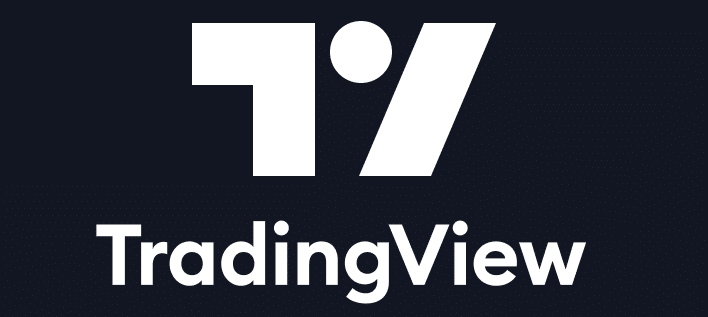
It’s often said that a man is only as good as their tools. Traders have the choice of a wide variety of these, namely in the form of trading platforms. Using the best software is one of the most crucial decisions a trader will make in their career.
Some brands in the industry have gained immense mainstream acceptance, particularly MT4 with forex. Despite this platform’s population, it is technically quite old-fashioned. Over the last ten years or so, several other charting packages have come to the market with more sophistication, one of which is TradingView.
It is fair to say TradingView is one of MT4’s biggest competitors. An objective comparison between each is necessary to understand the benefits and limitations of these two prevalent trading platforms.
What is MT4?
While many instruments are tradeable on MT4, forex traders are immensely familiar with the platform. Developed by MetaQuotes and released in 2005, MT4 has become the official de facto standard for trading currencies with almost all CFD brokers.

Such providers pay a set-up and monthly fees for the rights to offer the software free of charge to users, which is available across most known mobile and computer operating systems. MT4 came onto the scene at the perfect time when online trading burgeoned in the mid to late 2000s.
Aside from being very user-friendly, automated trading through the creation of expert advisors or robots was another of its biggest selling points. Although MT5 (released in 2010) being technically better than its predecessor, the adoption of MT4 is still significantly greater to this day.
What is TradingView?
Many prominent charting packages have come to the scene since the dawn of MT4 in 2005. Among these is TradingView, perhaps the most unique of them all, currently boasting over 15 million active users and over 40 000 publishers.

For starters, TradingView’s charting functionalities are some of the most exquisite in the industry. Additionally, the platform is also a dedicated social media network for traders to share ideas, strategies and create portfolios in various niche groups.
The project was the brainchild of three entrepreneurs, Stan Bokov, Denis Globa, and Constantin, who co-founded the New York-based fintech brand in September 2011. TradingView is completely browser-based, with no desktop application required to install. Additionally, versions of the software are available on mobile devices.
A quick comparison between MT4 and TradingView
Before diving more elaborately into the pros and cons of both platforms, here’s a quick technical comparison of the two.
| MT4 | TradingView | |
| Release year | 2005 | 2011 |
| Platform access | Web-basedDesktopMobile | Web-basedMobile |
| Programming language | MQL4 | Pine Script |
| Computer operating system | Windows, Mac (through third-party software) | N/A |
| Basic technical tools | 40 built-indicators9 time-frames3 chart types8 drawing tools | +100 built-in indicatorsCustomizable time-frames+10 chart types+30 drawing tools |
| Number of available instruments | Broker-dependent | Unlimited |
| Number of supported brokers | Thousands | 20 |
| Cost | Free | Free for the basic plan; different monthly and yearly subscriptions available |
Pros and cons of MT4
Let’s look at some of the benefits and drawbacks of MetaTrader 4.
Pros
- The platform is immensely popular, especially among forex brokers. This popularity allows for easier integration amongst hundreds of CFD providers and other third-party applications like simulators, analytics platforms, and more.
- Unlike TradingView, MT4 is available in all formats, namely web, desk/laptop, and mobile applications.
- It is technically more user-friendly as it has less sophistication than TradingView. Hence, MT4 is often the easiest for beginners to navigate.
- No costs are involved for using MT4, aside from the funding of live accounts.
- The MQL4 coding language allows for creating robots but is considered harder to implement for custom indicators.
Cons
- Perhaps the most obvious disadvantage with MT4 is its tremendously inferior charting functionalities and user interface compared to the likes of TradingView. On the desktop version, MT4 is a little slower than using a web-based program.
- Because MT4 is technically outdated by today’s standards and a free-to-use software, it has no technical support available.
- Mac users find it tricky to use MT4 because the processing requirements for the operating system do not inherently support MT4. Traders have to install additional software to run the platform.
- One of the biggest criticisms with MT4 is the lack of data storage, specifically with templates. Users need to constantly save their charting work which can disappear through a crash or software reinstallation.
- Another disadvantage is demo accounts expire after 30 days if not in use.
Pros and cons of TradingView
Let’s look at some of the benefits and drawbacks of TradingView.
Pros
- The clearest superiority of TradingView is its advanced features. In terms of technical qualities, the platform is miles ahead of MT4. The user interface is more aesthetically pleasing and incredibly responsive.
Part of the reason has to do with how TradingView is HTML 5 or browser-based. This technology utilizes far less data from the web, meaning charts can load and be moved smoothly and quickly with few interruptions, unlike MT4.
- Another important element with TradingView is being cloud-based. Users do not need to back up their templates as they would do on MT4. Even when sifting through tens of charts, all work done on previous markets remains on the software for future use.
- TradingView’s native programming language is seen as easier for creating custom indicators than other languages.
- There are several special features on TradingView, such as the bar replay function, ability to go back through years of historical data with ease, unique indicators, customizable time-frames, and the list goes on.
- As a social network, TradingView has a better community and support mechanism.
Cons
- While TradingView has a free basic plan, it is severely limited in terms of features and has frequent ad popups. Traders need to invest in their premium monthly or yearly plans to get the best experience. Fortunately, TradingView does often provide 30 to 60% discounts on these subscriptions.
- Only a handful of brokers allow for trading through TradingView, a stark contrast to the vast number of options available for MT4.
- Because of the software’s sophistication, TradingView is more suitable for experienced investors.
Final word
Objectively speaking, MT4 is the winner for simplicity and mainstream platform and broker integration. On the other hand, TradingView trumps MT4 when it comes to sophistication overall.
Over the last few years, the trend for thousands of traders has been using MT4 only for execution purposes while relying on TradingView for analysis. It’s clear to see that while MT4 is outdated, it has much broader broker access, meaning more people still need to use the platform.
A few have exclusively used TradingView with their supported broker, which is also a sensible option. Overall, MT4 is best for beginners, particularly because it’s free. On the other hand, TradingView is perfect for more experienced traders who can afford their subscription prices.








Leave a Reply